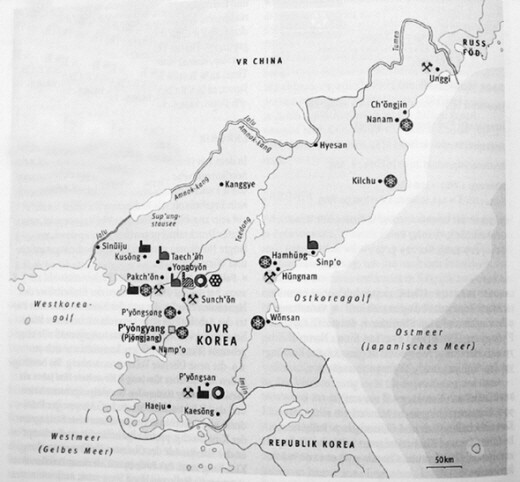hankyoreh
Links to other country sites 다른 나라 사이트 링크
Parallel labeling for East Sea discussed

By Oh Tai-kyu, Senior Staff writer
What is the correct name of the sea that lies between the Korean peninsula and the Japanese archipelago? From Aug. 22 to 23, the 16th International Seminar on the Naming of Seas hosted by The Society for East Sea Research and the Northeast Asian History Foundation was held at The Hague, Netherlands, the center of international law. The seminar, where the issue of naming “Donghae,” East Sea, was discussed, was attended by more than 30 experts from 12 countries including the United States, the United Kingdom, Austria, China and Japan.
This seminar was highly significant in that the issue of naming the East Sea was lively discussed within the general framework of toponymy, free from the narrow perspective being viewed against the special historical background that lies between Korea and Japan. In attendance were many influential experts in this field, including Ferjan Omeling, vice chairman of the United Nations Group of Experts on Geographical Names (UNGEGN), Paul Woodman, former Secretary of the United Kingdom Permanent Committee on Geographical Names, Peter Jordan, co-convenor of UNGEGN’s Working Group on Exonyms and an expert on Austrian place names and Milan Adamic of Slovenia.
Their attempts to link current issues in the field of toponymy, such as naming cultural heritage sites, the status of endonyms and exonyms, and the difference of place names within maritime boundaries between national and international waters, to the issue of naming of Donghae drew interest. Specific examples of two countries each using their own name for one area that involves them both, which can be consulted in future discussions of the naming of Donghae, were also reported. These included the English Channel (UK)/La Manche (France) and the Gulf of Piran (Slovenia)/Gulf of Savudrija (Croatia).
South Korea, which seeks parallel labeling of the sea in question as “East Sea”/“Sea of Japan,” appears to have gained new theoretical and practical weapons at the conference in addition to its logic predicated on the historical background of the name change from the East Sea to the Sea of Japan under the influence of Japanese colonial domination. Lee Ki-suk, emeritus professor at Seoul National University who has participated in these seminars from the beginning, said, “A lively discussion took place over the theoretical and practical examples, going beyond the central historical background.” Lee also said, “The biggest result of the seminar was the overall formation of a positive mood with regard to parallel labeling as the East Sea and the Sea of Japan.”
However, simply employing parallel labeling alone will not solve all the issues. The proportion of maps using parallel labeling has increased from 2.8 percent in 2000 to 10.5 percent in 2005, 23.8 percent in 2007 and 28.1 percent in 2009, thanks to concentrated efforts on the part of the government, academia and others. However, the United States, which wields the most powerful influence when it comes to global location names, has yet to employ the parallel label practice.
Also significant is the fact that a few European experts at the seminar suggested strongly that linking single labeling to colonialism was unreasonable.
Choo Sung-jae, vice chairman of the Society for East Sea Research and a professor of Kyung Hee University, said, “Singularly using the label “Sea of Japan” acknowledges a number of realities, and efforts to objectively provide logic to reverse this reality, rather than emotion, are important.”
Please direct questions or comments to [englishhani@hani.co.kr]
Editorial・opinion
![[Column] Season 2 of special prosecutor probe may be coming to Korea soon [Column] Season 2 of special prosecutor probe may be coming to Korea soon](https://flexible.img.hani.co.kr/flexible/normal/500/300/imgdb/original/2024/0426/3317141030699447.jpg) [Column] Season 2 of special prosecutor probe may be coming to Korea soon
[Column] Season 2 of special prosecutor probe may be coming to Korea soon![[Column] Park Geun-hye déjà vu in Yoon Suk-yeol [Column] Park Geun-hye déjà vu in Yoon Suk-yeol](https://flexible.img.hani.co.kr/flexible/normal/500/300/imgdb/original/2024/0424/651713945113788.jpg) [Column] Park Geun-hye déjà vu in Yoon Suk-yeol
[Column] Park Geun-hye déjà vu in Yoon Suk-yeol- [Editorial] New weight of N. Korea’s nuclear threats makes dialogue all the more urgent
- [Guest essay] The real reason Korea’s new right wants to dub Rhee a founding father
- [Column] ‘Choson’: Is it time we start referring to N. Korea in its own terms?
- [Editorial] Japan’s rewriting of history with Korea has gone too far
- [Column] The president’s questionable capacity for dialogue
- [Column] Are chaebol firms just pizza pies for families to divvy up as they please?
- [Column] Has Korea, too, crossed the Rubicon on China?
- [Correspondent’s column] In Japan’s alliance with US, echoes of its past alliances with UK
Most viewed articles
- 1[Column] Season 2 of special prosecutor probe may be coming to Korea soon
- 2‘We must say no’: Seoul defense chief on Korean, USFK involvement in hypothetical Taiwan crisis
- 3Is N. Korea threatening to test nukes in response to possible new US-led sanctions body?
- 4No good, very bad game for Korea puts it out of Olympics for first time since 1988
- 5Is Japan about to snatch control of Line messenger from Korea’s Naver?
- 6Division commander ordered troops to enter raging flood waters before Marine died, survivor says
- 7Korea’s 1.3% growth in Q1 signals ‘textbook’ return to growth, says government
- 8N. Korean delegation’s trip to Iran shows how Pyongyang is leveraging ties with Moscow
- 9[Editorial] Korea’s surprise Q1 growth requires objective assessment, not blind fanfare
- 10[Editorial] Government needs to stop impeding Sewol mourning